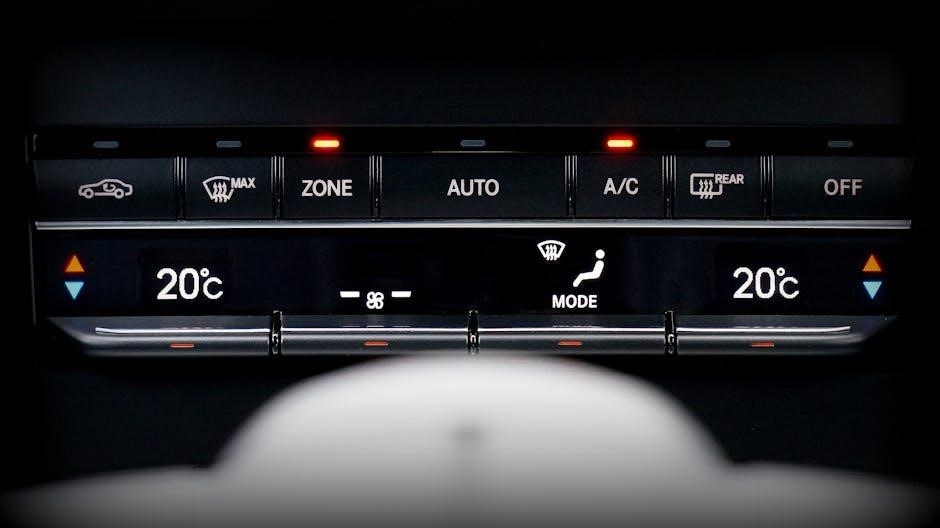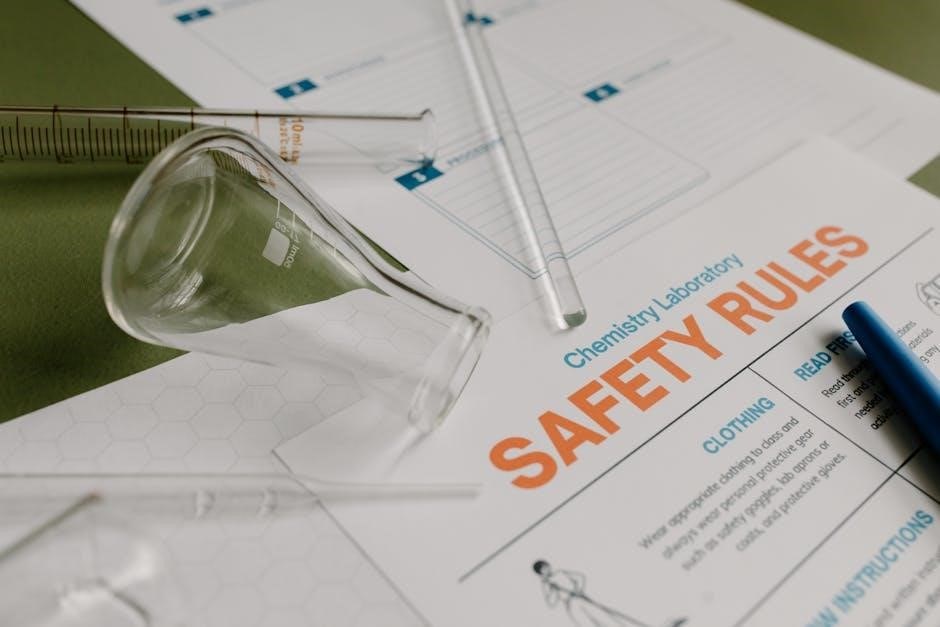emdr 2.0 protocol pdf
Download the EMDR 2.0 Protocol PDF and unlock advanced techniques for trauma recovery. Get your free guide now!
EMDR 2.0 is an advanced version of standard EMDR, designed for unresponsive clients. It incorporates a simplified self-protocol with four phases: preparation, assessment, processing, and consolidation.
1.1 Definition and Overview
EMDR 2.0 is an advanced version of standard EMDR therapy, designed to enhance trauma processing. It integrates biofeedback and cognitive techniques, offering a structured protocol for unresponsive clients. The EMDR 2.0 Protocol PDF provides a comprehensive guide, outlining phases like preparation, assessment, processing, and consolidation. It addresses avoidance behaviors and targets specific memories, making it versatile for various populations, including military personnel and first responders. This updated framework aims to optimize therapeutic outcomes through innovative approaches.
1.2 Purpose and Scope
The primary purpose of EMDR 2.0 is to enhance the effectiveness of standard EMDR therapy, particularly for clients who do not respond well to traditional methods. Its scope extends to addressing complex trauma, PTSD, and combat stress, with a focus on military and first responder populations. The protocol incorporates biofeedback, cognitive restructuring, and interweaves to improve processing outcomes. By integrating these elements, EMDR 2.0 aims to broaden the application of EMDR therapy, ensuring better results for a wider range of clients.
History and Development of EMDR 2.0
EMDR 2.0 evolved from standard EMDR, integrating advanced techniques like cognitive restructuring and biofeedback. Developed for unresponsive clients, it enhances trauma processing and expands therapeutic applications.
2.1 Evolution from Standard EMDR
EMDR 2.0 emerged as an advanced adaptation of standard EMDR, incorporating enhanced techniques like cognitive restructuring and biofeedback. It was developed to address the limitations of traditional EMDR, particularly for clients who showed minimal response to conventional methods. The updated protocol integrates a simplified, four-phase approach, focusing on preparation, assessment, processing, and consolidation. This evolution aims to improve efficacy in trauma processing and expand its applications, making it more accessible and effective for diverse client needs.
2.2 Key Innovations in EMDR 2.0
EMDR 2.0 introduces several groundbreaking innovations, including enhanced assessment tools for identifying unprocessed memories and improved techniques for processing traumatic material. It incorporates advanced cognitive-behavioral strategies and integrates biofeedback to monitor physiological responses during therapy. Additionally, EMDR 2.0 streamlines the standard eight-phase approach into a more efficient, client-centered framework. These innovations aim to accelerate treatment outcomes and enhance the overall therapeutic experience, making it more adaptable to diverse clinical scenarios.

Core Principles of EMDR 2.0
EMDR 2.0 is rooted in the Adaptive Information Processing (AIP) model, emphasizing the brain’s natural healing processes. It integrates cognitive and somatic techniques to address trauma holistically.
3.1 Adaptive Information Processing (AIP) Model
The Adaptive Information Processing (AIP) model is a foundational concept in EMDR 2.0, proposed by Francine Shapiro. It posits that the brain has an inherent ability to process traumatic memories and integrate them into a coherent narrative, reducing distress.
By leveraging bilateral stimulation, EMDR 2.0 mimics the brain’s natural processing during REM sleep, enhancing neuroplasticity and fostering adaptive encoding of traumatic memories, leading to lasting therapeutic outcomes.
3.2 Integration of Cognitive and Somatic Techniques
EMDR 2.0 seamlessly integrates cognitive and somatic techniques to address both mental and physical aspects of trauma. Cognitive techniques focus on reframing negative beliefs, while somatic approaches target bodily sensations linked to traumatic memories.
This dual approach enhances processing by bridging the gap between thoughts and physical responses, promoting deeper healing. By addressing both mind and body, EMDR 2.0 accelerates the resolution of traumatic memories, fostering emotional regulation and reducing physiological tension.
Phases of the EMDR 2.0 Protocol
EMDR 2.0 follows a structured, goal-oriented approach with distinct phases, each serving a specific function in the therapeutic process.
4.1 Preparation Phase
The preparation phase in EMDR 2.0 focuses on establishing a therapeutic alliance, building trust, and educating the client about the process. It involves assessing the client’s readiness, discussing expectations, and ensuring a safe environment. This phase also includes history taking to identify potential targets for processing and introducing stabilization techniques to prepare the client for emotional challenges. The goal is to create a foundation for effective therapy by aligning client goals with the EMDR 2.0 framework.
4.2 Assessment Phase
The assessment phase in EMDR 2.0 involves identifying and prioritizing targets for processing, such as traumatic memories or distressing events. The therapist evaluates the client’s emotional intensity using scales like the Subjective Units of Distress Scale (SUDS). This phase also involves assessing the client’s stability and readiness for processing, ensuring they can manage potential emotional triggers. Techniques like cognitive interweaves may be introduced to prepare the client for the next phase, ensuring a structured approach to trauma resolution.
4.3 Processing Phase
The processing phase in EMDR 2.0 is where the client actively engages with traumatic memories, facilitated by bilateral stimulation, such as eye movements or tapping. The therapist guides the process, allowing the client’s neural network to reprocess distressing material without interference. This phase typically lasts 60–90 minutes, with breaks to assess progress. Techniques like interweaves may be used if processing stalls. The goal is to achieve emotional and cognitive integration, reducing the vividness and distress associated with traumatic memories, fostering long-term psychological relief.
4.4 Consolidation Phase
The consolidation phase in EMDR 2.0 focuses on stabilizing and integrating the positive changes achieved during the processing phase. Techniques such as grounding exercises and reinforcing positive cognitions are employed to ensure the client retains the benefits. This phase also involves enhancing emotional regulation and resilience, preparing the client for future challenges. The goal is to solidify the progress, ensuring long-term psychological well-being and stability.
4.5 Reevaluation Phase
The reevaluation phase in EMDR 2.0 ensures that treatment goals are met and that no unresolved issues remain. Therapists assess the client’s progress, checking for any lingering distress or unprocessed memories. This phase involves reviewing treatment outcomes, ensuring target memories are no longer disruptive, and evaluating the client’s overall mental state. Standardized tools and client feedback are used to confirm the effectiveness of the therapy and determine if additional sessions are needed.
Tools and Techniques in EMDR 2.0
EMDR 2.0 incorporates advanced tools like eye movements, tactile methods, and cognitive restructuring to enhance trauma processing, ensuring a comprehensive approach to emotional healing and recovery.
5.1 Eye Movements and Tapping Techniques
Eye movements and tapping are core components of EMDR 2.0, enhancing bilateral brain stimulation to process traumatic memories. These techniques mimic natural memory consolidation, reducing distress and promoting integration. Tapping offers an alternative to eye movements, providing flexibility for clients with visual sensitivities. Both methods facilitate reprocessing, enabling the brain to reconnect fragmented trauma narratives, fostering healing and emotional regulation. Clinical applications emphasize precision and client comfort, ensuring effective trauma resolution.
5.2 Cognitive Restructuring and Interweaves
Cognitive restructuring in EMDR 2.0 involves identifying and challenging negative self-referential beliefs, replacing them with more adaptive narratives. Interweaves are strategic interventions used to enhance processing when clients are stuck or looping in distress. These techniques foster emotional regulation, reduce cognitive distortions, and promote integration of traumatic memories. By addressing maladaptive thought patterns, EMDR 2.0 enhances the reprocessing of traumatic material, leading to more adaptive and empowering cognitive outcomes for clients.

Integration of Biofeedback in EMDR 2.0
EMDR 2.0 integrates biofeedback to monitor physiological responses, enhancing body awareness and emotional regulation during reprocessing. This real-time data improves trauma processing and treatment outcomes effectively.
6.1 Role of Body Awareness
Body awareness in EMDR 2.0 enhances clients’ connection to physiological sensations, aiding in trauma processing. By focusing on somatic experiences, individuals gain insight into stored trauma, fostering emotional regulation and memory reconsolidation. Biofeedback tools monitor these responses, providing real-time data to guide therapy. This integration allows therapists to address dissociation and tension, promoting deeper healing. Body awareness becomes a cornerstone for effective reprocessing, ensuring mind-body alignment and optimal therapeutic outcomes in treating trauma.
6.2 Cognition and Trauma Processing
In EMDR 2.0, cognition plays a critical role in reprocessing traumatic memories by engaging the brain’s adaptive information processing system. Cognitive restructuring techniques help clients reinterpret traumatic events, reducing negative beliefs and emotions. Bilateral stimulation enhances the integration of traumatic memories into a coherent narrative, promoting emotional regulation. This dual focus on cognition and somatic responses ensures a comprehensive approach to trauma healing, fostering resilience and long-term recovery.

Applications of EMDR 2.0 in Therapy
EMDR 2.0 is an innovative therapy approach for treating trauma, anxiety, and depression, offering enhanced emotional processing and resilience in both civilian and high-stress professional populations.
7.1 Treatment of PTSD and Combat Stress
EMDR 2.0 is highly effective in treating PTSD and combat stress by targeting traumatic memories and reducing symptoms like flashbacks and anxiety. Its structured approach enhances emotional regulation and resilience, particularly for military personnel and first responders. By integrating advanced techniques, EMDR 2.0 accelerates processing of distressing experiences, promoting long-term recovery; Its adaptability to individual needs makes it a valuable tool for addressing complex trauma in high-stress populations, offering hope for those struggling with prolonged psychological distress.
7.2 Use in Military and First Responder Populations
EMDR 2.0 is increasingly used to address trauma in military and first responder populations, offering a structured approach to reduce occupational stress and enhance resilience. Its focus on processing traumatic memories helps alleviate hypervigilance, emotional numbing, and other symptoms common in these groups. The protocol’s adaptability and integration of cognitive and somatic techniques make it particularly effective for complex traumas, fostering recovery and improving job performance in high-stress professions.

EMDR 2.0 for Unresponsive Clients
EMDR 2.0 offers tailored strategies to engage unresponsive clients, enhancing their ability to process trauma through adaptive techniques and personalized approaches, fostering improved therapeutic outcomes.
8.1 Strategies for Increasing Responsiveness
EMDR 2.0 incorporates innovative strategies to enhance client responsiveness, such as emotional regulation techniques, somatic interventions, and cognitive interweaves. These methods help clients connect with traumatic material without overwhelm. By integrating body awareness and adaptive processing, therapists can tailor interventions to individual needs, fostering trust and stabilization. This client-centered approach ensures that even unresponsive individuals can gradually engage with their trauma, promoting meaningful progress in therapy. These strategies are designed to address resistance and deepen therapeutic engagement effectively.
8.2 Case Studies and Success Stories
EMDR 2.0 has demonstrated remarkable success in treating complex trauma cases. Case studies highlight its effectiveness in reducing PTSD symptoms in military personnel and first responders. One notable example involved a combat veteran who achieved significant emotional regulation and symptom reduction after six sessions. Another case showed rapid processing of traumatic memories in a client with severe dissociation. These success stories underscore EMDR 2.0’s ability to foster lasting healing, even in challenging cases, through its innovative and adaptive approach to trauma treatment.

Training and Mastery of EMDR 2.0
Comprehensive training programs emphasize theoretical understanding and practical skills. Professionals learn advanced techniques, supervised practice, and case analysis to master EMDR 2.0’s unique protocols and applications.
9.1 Professional Development Programs
Professional development programs for EMDR 2.0 emphasize hands-on training, case studies, and advanced techniques. Therapists engage in accredited courses, workshops, and online modules to deepen their expertise. These programs focus on enhancing clinical skills, addressing complex cases, and integrating EMDR 2.0 with other therapies. Practical applications and peer feedback are central to mastering the protocol. Such programs ensure therapists are well-equipped to apply EMDR 2.0 effectively, adhering to its evidence-based framework and ethical standards.
9.2 Assessment of Therapist Competence
Assessment of therapist competence in EMDR 2.0 involves evaluating clinical skills, adherence to protocol, and patient outcomes. Certifications, peer reviews, and case presentations are common methods. Competency is measured through practical exams, client feedback, and demonstration of ethical practice; Continuous professional development and adherence to updated standards ensure therapists maintain proficiency. Regular assessments help identify areas for improvement, fostering high-quality care and effective implementation of the EMDR 2.0 protocol in therapeutic settings.

Comparison with Other Therapies
EMDR 2.0 differs from other therapies by integrating advanced techniques for trauma processing, combining cognitive and somatic approaches, and emphasizing efficient, evidence-based outcomes, setting it apart from traditional methods.
10.1 EMDR 2.0 vs. Flash Technique
EMDR 2.0 and the Flash Technique share goals of trauma processing but differ in approach. EMDR 2.0 uses structured phases and bilateral stimulation, while the Flash Technique focuses on brief, imaginal exposure. EMDR 2.0 emphasizes comprehensive memory reconsolidation, whereas the Flash Technique aims for rapid symptom reduction. Both are effective, but EMDR 2.0 offers deeper processing for complex trauma, supported by extensive research, making it a preferred choice for therapists seeking long-term outcomes.
10.2 Efficacy in Randomized Controlled Trials
EMDR 2.0 has demonstrated strong efficacy in randomized controlled trials, particularly for PTSD and trauma-related disorders. Studies highlight its ability to reduce symptoms significantly, often in fewer sessions compared to traditional therapies. Research supports its evidence-based approach, showing consistent positive outcomes. EMDR 2.0’s structured phases and adaptive techniques contribute to its effectiveness, making it a reliable choice for clinicians seeking empirically validated treatments for trauma recovery.

Case Studies and Practical Examples
EMDR 2.0’s real-world applications are demonstrated through diverse case studies, showcasing its effectiveness in treating combat trauma, childhood abuse, and complex PTSD, with structured phases ensuring sustained symptom reduction and improved emotional regulation across diverse populations, supported by evidence-based outcomes and clinical data illustrating its versatility and success in trauma recovery scenarios.
11.1 Traumatic Memory Processing
EMDR 2.0 effectively processes traumatic memories by enhancing neural connectivity, reducing distress associated with recalling traumatic events. Bilateral stimulation integrates fragmented memories, promoting adaptive processing and long-term symptom reduction. Cognitive interweaves guide clients to reframe negative beliefs, fostering resilience. Case studies demonstrate improved emotional regulation and reduced hyperarousal in individuals with PTSD. This approach ensures traumatic memories are stored narratively, minimizing their disruptive impact, with evidence-based outcomes highlighting its efficacy in treating diverse trauma populations, including combat veterans and abuse survivors, through structured and phased memory reconsolidation techniques.
11.2 Real-World Applications and Outcomes
EMDR 2.0 has shown remarkable effectiveness in real-world clinical applications, particularly in treating PTSD, anxiety, and depression. Clinicians report significant reductions in symptom severity, with many clients achieving full recovery. Case studies highlight improved emotional regulation, enhanced cognitive functioning, and better overall quality of life. Its structured approach ensures consistent outcomes across diverse populations, including veterans, first responders, and trauma survivors. EMDR 2.0’s efficacy is further supported by measurable improvements in mental health metrics, demonstrating its practical value in modern psychotherapy settings.

Limitations and Criticisms
EMDR 2.0 faces criticism for requiring extensive training, potential ineffectiveness for complex traumas, and debates over its evidence base and standardized application.
12.1 Challenges in Implementation
Implementing EMDR 2.0 requires specialized training and may not be suitable for all clients, particularly those with severe dissociation or complex trauma. The protocol demands high therapist expertise, limiting accessibility. Client responsiveness can vary, and some may find bilateral stimulation distressing. Cultural and language barriers may also hinder effectiveness. Additionally, the time-intensive nature of sessions and the need for consistent client engagement pose challenges in clinical settings with limited resources or time constraints.
12.2 Controversies in the Field
EMDR 2.0 has faced criticism regarding its evidence base and lack of comparative studies with other trauma therapies. Some researchers question its unique mechanisms, arguing that benefits may stem from nonspecific factors like therapeutic rapport. The reliance on eye movements has sparked debate, with critics suggesting placebo effects or client expectation may play a role. Additionally, the protocol’s complexity and the need for advanced training have led to concerns about accessibility and consistency in application across diverse clinical settings.

Future Directions for EMDR 2.0
Future research should focus on neurobiological mechanisms and long-term efficacy. Integration with emerging technologies and other therapies, like mindfulness, could enhance outcomes. Expanding applications beyond PTSD and standardizing training protocols are priorities.
13.1 Emerging Research and Developments
Research on EMDR 2.0 is expanding into neuroimaging studies to map brain changes during processing. AI-driven tools are being explored to enhance real-time feedback and personalize treatment. Virtual reality (VR) integration is also being tested to create immersive environments for trauma processing. Additionally, studies are investigating the protocol’s efficacy for conditions beyond PTSD, such as anxiety and depression. These advancements aim to refine the protocol, improve outcomes, and broaden its applications in mental health care.
13.2 Potential Integration with Other Modalities
EMDR 2.0’s adaptive framework allows seamless integration with other therapies, enhancing its effectiveness. Combining it with cognitive-behavioral therapy (CBT) can strengthen cognitive restructuring. Mindfulness-based stress reduction (MBSR) can deepen emotional regulation, while somatic experiencing (SE) can amplify body awareness. Integration with neurofeedback and art therapy is also being explored to address diverse client needs. These combinations aim to create a holistic treatment approach, fostering resilience and promoting long-term recovery.
EMDR 2.0 represents a breakthrough in trauma therapy, offering an evidence-based, client-centered approach. Its innovative techniques and adaptability make it a cornerstone in advancing mental health care.
14.1 Summary of Key Points
EMDR 2.0 is an advanced, evidence-based therapy protocol that enhances the treatment of trauma and related disorders. It integrates the Adaptive Information Processing (AIP) model with innovative techniques like biofeedback and cognitive restructuring. Designed to address complexities in trauma processing, EMDR 2.0 emphasizes client-centered care and adaptability. Its structured phases, from preparation to reevaluation, ensure comprehensive healing. By combining somatic and cognitive approaches, it offers a holistic path to recovery, making it a valuable tool for therapists treating PTSD and other trauma-related conditions.
14.2 Final Thoughts on EMDR 2.0
EMDR 2.0 represents a significant evolution in trauma therapy, offering an evidence-based, adaptive approach to healing. Its integration of biofeedback, cognitive techniques, and somatic awareness makes it highly effective for diverse client needs. By addressing both past traumas and present challenges, EMDR 2.0 provides a comprehensive framework for recovery. Its focus on client-centered care and innovation positions it as a valuable tool for therapists, promising enhanced outcomes and shorter recovery times for those seeking trauma resolution.

